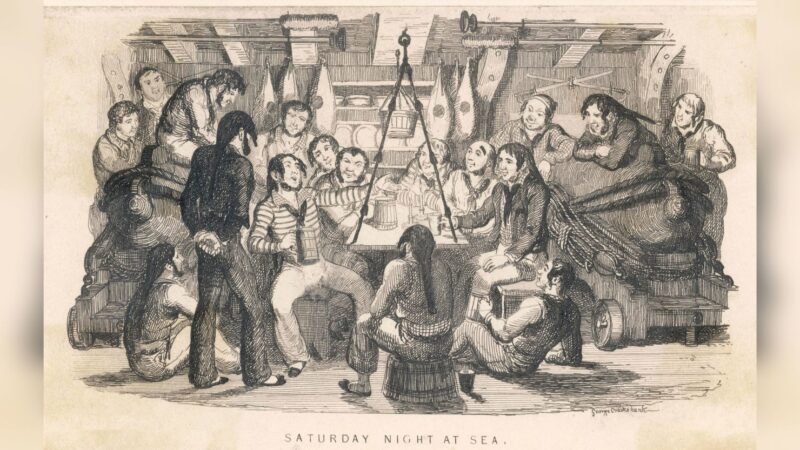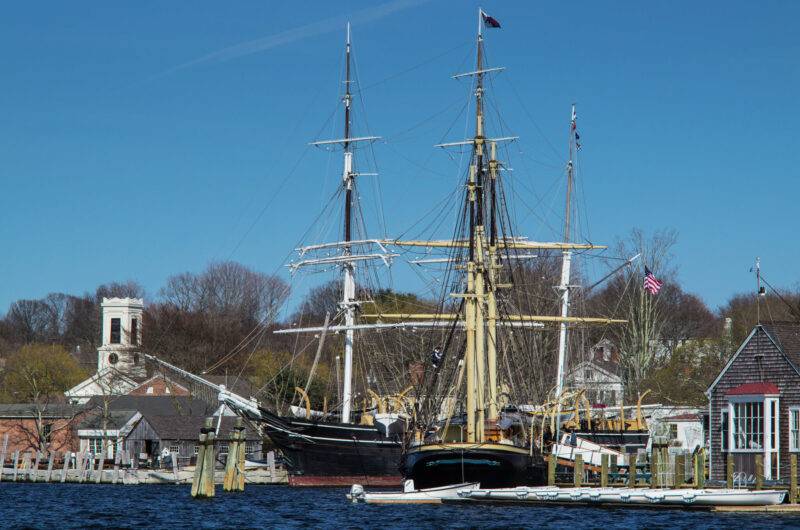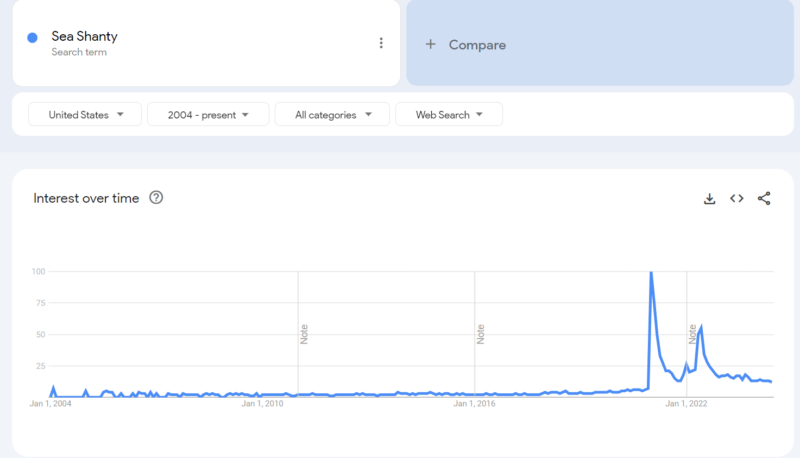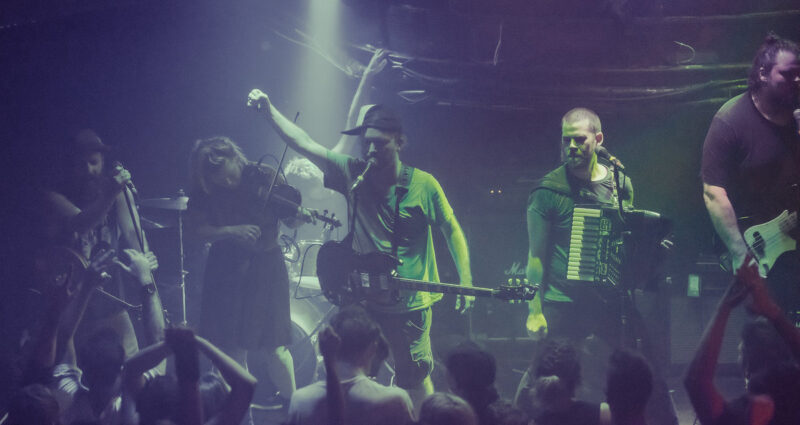
AARRRGHHHHH!!!!🏴☠️ (Pirate Post) by Kayode D. '27
A Review of 21M.299 - Pirate Songs and Whaling Chanteys
I mentioned it in a previous blog, but this semester I took a class called 21M.299: World Music Studies – Pirate Songs and Whaling Chanteys. I wanted to take a music class and this seemed like the most bizarre and wikipedia-rabbit-hole-inducing one being offered, so of course I took it. It’s taught by Professor Joe Maurer, one of the most knowledgeable people in the world on sea music, and it was an insanely fun class!
At MIT, all students need to take 8 Humanities Classes total, of which, 2 have to be communications focused, 2 have to be humanities, 2 have to be arts, and 2 have to be in the social sciences (or something like that). This class counted for an arts credit. Additionally, students concentrate on a specific thing with their humanities courses, like Dance or Graphic Design or something like that. I think I’m going to concentrate in Music Technology if I can swing it with my schedule.
The class had 3 main focuses: Historical Shanties, Shanty Revivals, and Modern Shanty Culture. I can’t spoil everything, since I want you all to take the class someday, but I will gloss over each section and share the coolest li’l thing in each.
Historical Chanteys
I hate to be the one to burst your bubble, I really do. But PIRATE Shanties? Not real. You’ve been lied to by the Big Mouse01 A shocking amount of the information people consider to be true about pirates is heavily due to Disney over the years. Treasure Island started the idea, with the funny voiced men, the X-marks the spot and treasure maps, the peglegs, the parrots... Then with Peter Pan, the ideas of hooks for a hand and singing pirates came about. None of this is factual, and was just made up by Disney because it was a fun story. The lie only got doubled down when The Pirates of the Caribbean came out, and now we're here! Thanks Walt! .. The Golden Age of Piracy was from the 1650s to the 1730s, while the earliest documentation of the shanty phenomenon is from ~1867, putting the two in completely different eras. A “Historical Chantey” was a work song used to coordinate a heaving task (like spinning the capstan to raise an anchor)02 these songs usually have a steady pace and could have whole lines repeater. Think of something like 99 bottles of milk on the wall, or The Ants Go Marching (which shares the tune with A Drop of Nelson's Blood, a shanty we learned!!) or hauling task (like raising the sails)03 these songs usually have the Chanteyman singing a verse, and the crew calling out a phrase or 2 at the end of each section, to initiate a unified pull. .
Usually, shanties were led by someone known as the “Chanteyman” whose entire job was to memorize and lead chanteys onboard a ship to make tasks faster. Unlike in modern media, instruments were rarely ever used on ships, so all songs were acapella. Most of these songs were slow, and the songs that might come to mind when you think of sea shanties (The Wellerman, Hoist the Colors, etc.) lack the structure of a true “Historical Chantey”.
That’s another thing! For the sailors, this wasn’t “sea music,” it was just “music” – there was no other music in their lives to distinguish from. Also, the word “Chantey” or “Shanty” was often spoken and not written why would they write?04 Most of the chanteys that we have today either come from recordings made in the 1900s of the last living sailors who sang, or from the wives of captains who were onboard these ships and recorded what they heard. This also creates problems, since sailors won't sing all of the explicit lyrics in front of women, so we have no records of some authentic lyrics to chanteys. , and chantey/shanty enthusiasts didn’t really nail down how it should be spelt, so it differs from place to place. All you really need to know is that “Chanteys” often refers to strictly historical chanteys, while “Shanties” loosely refers to any new age sea music. They are both pronounced the same way, though.
Favorite Historical Chanteys: Blood Red Roses, Blow the Man Down, A Drop of Nelson’s Blood05 Lore I have to share: The story for this song goes that there was an Admiral Nelson who died in the Battle of Trafalgar in 1805, and to preserve his body, the crew put his body into a barrel of rum. One night, some members of the crew wanted to drink and accidentally drank from the barrel holding Nelson's body. So it became slang to call rum Nelson's Blood. So they say in the song that <em>a drop of Nelson's Blood wouldn't do us any harm, </em>they mean that having a drink wouldn't kill them. Fun lore. , Pleasant and Delightful06 I'll be honest. I was really fed up with this song. It is very different from modern western music, and the rhythm and spacing of notes made my music brain angry. But it did grow on me and I've caught myself more than once singing this song to myself like a crazy old sea dog who yearns for the Great Blue. .
The Revivals
There was a big wave of shanty revival in the mid-to-late 1900s, largely spurred on by the folk music revival. A lot of great groups and singers like Lou Killen, A.L. Lloyd, Stan Rogers, and a lot of other great people and groups recorded and shared what was known about Historical Shanties, while also writing new songs in a similar style or theme, which we now call “Focsle Songs” (“Folks-ill”). There were a lot of bangers made, like Barrett’s Privateers07 I love this song. It was written by Stan Rogers, who is a legend in Shanty Culture. He's like Elvis for Canadians over 50. The group he sang with wouldn't let him lead songs, and so he wrote one with such a complex time signature that only he could lead it. What a legend. , The Mary Ellen Carter08 I this might be my favorite sea song of all time. It's also by Stan Rogers, and chronicles the sinking and eventual rising of a fictional ship known as the Mary Ellen Carter. It's inspiring and musically amazing, and it even gave a man named Robert Cusick the strength to save his life after his boat sank and left him floating in freezing water in 1983 (https://timpanogos.blog/2013/05/30/rise-again-how-a-sea-chanty-saved-a-sailor-and-why-government-regulation-saves-lives/) , and The Wellerman09 I am not a fan of this song. It has oversaturated the collective shanty conscious and pushed out the majority of sea music in media. . This is where the definition of what a chantey is started to flake out, since most written songs were no longer for use on a ship. The word “Shanty” began to refer to any song about the ocean, which is sort of how people know it today.
THE Sea Shanty Book

Stan Hugill’s book, Shanties From the Seven Seas is like the holy grail of sea shanties. He wrote it when he saw that the last of those who saw the shanties first hand were passing away, and he documented all that he knew about shanties. He goes into history and variations in lyrics for the different songs, and this book is where anyone would send you to learn about Historical Sea Shanties. I read all 400 pages of this book in 2 hours in the McCormick hall lobby because I procrastinated it, and it was honestly a pretty solid read, and if you are down about Disney pirates not being real, this book will make you excited about the real deals.
Modern Sea Shanties
Believe it or not, a lot of Shanty and pirate culture was created in the last 20-30 years. If you look at a graph of people looking up “sea shanty” on google, the overwhelming majority come from 2020 on. This is due in large part to the blow up of the Wellerman on tiktok, the release of the Pirates of the Caribbean Movies, and the Assassin Creed games. Captain Joe had a special focus on this era of shanties, and we had insane insight into this part of History. I personally think he should make a 3 hour youtube documentary about the butterfly effect of things like the Curse of Monkey Island computer game and Mr. Smee’s horizontally striped shirt, and the impact that it’s had on shanty culture as a whole.
There were also a ton of AMAZING bands and groups that popped up in recent years that have helped shanties become as popular as they are. Some are folky (and funky) like Schooner Fare, some make modern revamps of the classics like The Longest Johns, and some branch out into new modern genres like The Dreadnoughts with Metal Shanties.
Other cool Pirate-y things we did
In a typical class, we would read a passage or book before coming to class, discuss said passage for the first 30 minutes, talk about new material for the next 30 minutes, and end with 20 minutes of shanty singing. We practiced improvisation and getting our singing tone to match a sailors, and learned a ton about sailors. We also did shanty sings throughout the year, where we set up in Lobby 7 and sang for the people that walked past. It seemed nerve-wracking at first but it quickly became fun and I even led a song last time we did it.
We also made some incredible projects which I want to put in a blog of their own, because it’s so cool the things my classmates made. Go read it: [will update when available] (I would have put it here but i waited until night on 6/1 to ask for permission).
Final Words, before I Cross the Bar.
This class was so much fun. I think I looked forward to this class more than any other one that I’ve had at MIT yet. Professor Joe Maurer is one of the most knowledgeable people on shanty culture in the world, and I was beyond privileged to learn from him. I can safely say that my favorite thing about New England is the rich Sea Shanty culture and history here, and I’ll probably keep singing in the shanty sings in future years.
So if you want to learn more about the shanty revival concept album with Sting, a modern shanty album entirely about driving to buy almond milk for your sweetheart, or why pirates are depicted to be wearing striped shirts and have parrots on their shoulders, take this class whenever it’s offered next!! (I’m not entirely sure when that will be, but this is a very fun class.)
TRUE Sea Shanty Playlist made by Captain Joe:
- A shocking amount of the information people consider to be true about pirates is heavily due to Disney over the years. Treasure Island started the idea, with the funny voiced men, the X-marks the spot and treasure maps, the peglegs, the parrots... Then with Peter Pan, the ideas of hooks for a hand and singing pirates came about. None of this is factual, and was just made up by Disney because it was a fun story. The lie only got doubled down when The Pirates of the Caribbean came out, and now we're here! Thanks Walt! back to text ↑
- these songs usually have a steady pace and could have whole lines repeater. Think of something like 99 bottles of milk on the wall, or The Ants Go Marching (which shares the tune with A Drop of Nelson's Blood, a shanty we learned!!) back to text ↑
- these songs usually have the Chanteyman singing a verse, and the crew calling out a phrase or 2 at the end of each section, to initiate a unified pull. back to text ↑
- Most of the chanteys that we have today either come from recordings made in the 1900s of the last living sailors who sang, or from the wives of captains who were onboard these ships and recorded what they heard. This also creates problems, since sailors won't sing all of the explicit lyrics in front of women, so we have no records of some authentic lyrics to chanteys. back to text ↑
- Lore I have to share: The story for this song goes that there was an Admiral Nelson who died in the Battle of Trafalgar in 1805, and to preserve his body, the crew put his body into a barrel of rum. One night, some members of the crew wanted to drink and accidentally drank from the barrel holding Nelson's body. So it became slang to call rum Nelson's Blood. So they say in the song that a drop of Nelson's Blood wouldn't do us any harm, they mean that having a drink wouldn't kill them. Fun lore. back to text ↑
- I'll be honest. I was really fed up with this song. It is very different from modern western music, and the rhythm and spacing of notes made my music brain angry. But it did grow on me and I've caught myself more than once singing this song to myself like a crazy old sea dog who yearns for the Great Blue. back to text ↑
- I love this song. It was written by Stan Rogers, who is a legend in Shanty Culture. He's like Elvis for Canadians over 50. The group he sang with wouldn't let him lead songs, and so he wrote one with such a complex time signature that only he could lead it. What a legend. back to text ↑
- I this might be my favorite sea song of all time. It's also by Stan Rogers, and chronicles the sinking and eventual rising of a fictional ship known as the Mary Ellen Carter. It's inspiring and musically amazing, and it even gave a man named Robert Cusick the strength to save his life after his boat sank and left him floating in freezing water in 1983 (https://timpanogos.blog/2013/05/30/rise-again-how-a-sea-chanty-saved-a-sailor-and-why-government-regulation-saves-lives/) back to text ↑
- I am not a fan of this song. It has oversaturated the collective shanty conscious and pushed out the majority of sea music in media. back to text ↑






